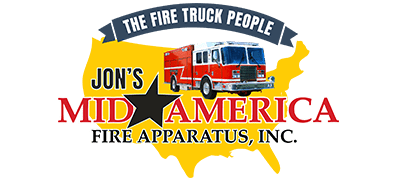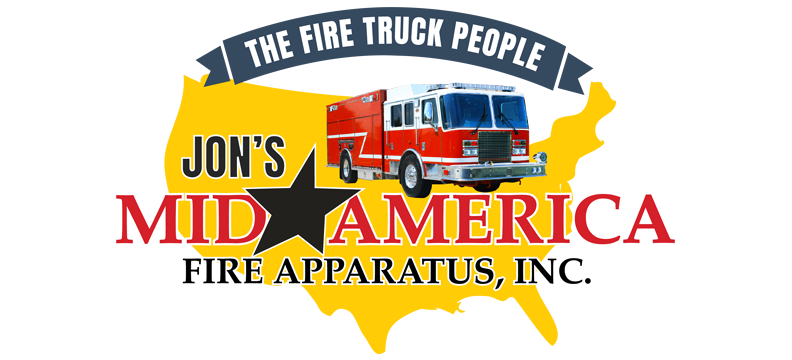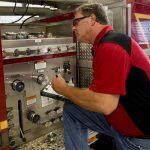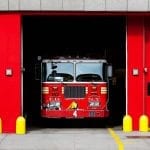Selecting the right fire apparatus is important. So is the fire equipment you carry on board.
Having the right type of equipment impacts your readiness to respond to emergencies. The Insurance Service Office considers fire apparatus equipment when assessing the fire safety risk level of your community, which may affect local insurance premiums.
Your fire equipment requirements may vary depending on the needs of your department and the apparatus in your fleet.
We’ve compiled a summary of some of the key equipment you’ll want to keep in mind when outfitting your new or used fire apparatus.
Fire Hoses, Foam and Nozzles
While it seems like such a simple tool, the fire hose has a big job. All of your hoses must meet stringent requirements in order to meet the demands of your department and community.
- Must be able to connect to a fire hydrant or plumbing system.
- Must carry water and/or fire retardant chemicals to the fire.
- Must be proper length and diameter to carry the proper amount of water or chemicals the required distance.
According to the ISO, the required hose length and diameter depend upon the amount of water you need to flow and how far the water must travel from the source to the fire.
- You need both firefighting hoses and supply hoses on board.
- Supply hose. A single engine company should carry at least 1200’ of supply hose with a diameter of 2 ½” or larger. Supply hoses may come in a combination of diameters depending on flow requirements — such as 2”, 2 ½” or 3”.
- Booster hose. At least 200’ required. An extra pre-connected 1 ½’ hose may substitute.
- Carried hose. One 400’ required with 1 ½” diameter.
- Spare hoses. Need one 1 ½” diameter spare 200’ in length and one 2 ½” diameter 400’ in length.
- Heavy stream appliance. Flow capacity of 1,000 gpm.
The ISO has also published standards pertaining to fire fighting foam and nozzle requirements.
- At least 10 gallons of carried foam and 15 gallons of spare.
- One distributing nozzle
- One foam nozzle of 1 ½” minimum
- Two 2 ½” straight stream nozzles with shut-off
- Two 2 ½” combination nozzles with shut-off
- Two 1 ½” combination nozzles with shut-off
You also need one hose clamp, one hydrant gate of 2 ½”, one burst hose jacket of 2 ½” and one gated wye of 2 ½” x 1 ½” x 1 ½”.
Fire Ladders
Ladders will vary depending on the type of apparatus you’re driving. Some ladders are mounted on the fire truck — including turntable, tower and tiller ladders. The apparatus may also hold smaller ladders for carrying.
The ISO looks for two basic types of fire ladders at a minimum:
- At least one 12’ or 14’ roof ladder
- At least one 24’ extension ladder
SCBA Equipment
Self-contained breathing apparatus (SCBA) equipment provides a steady supply of oxygen and is essential for protecting firefighters from lung damage caused by smoke inhalation.
- SCBA gear has three basic parts: a face mask, pressure regulator and high pressure tank of 2200 to 4500 pounds per inch (psi).
- It is mounted on a frame to allow maximum firefighter mobility.
- The ISO requires at least four units with a minimum 30-minute supply of oxygen per unit.
Firefighter Turnout Gear and Other Firefighter Gear
Turnout gear is the protective clothing firefighters wear while battling fires, and it covers the following items:
- Coats
- Pants
- Boots
- Gloves
- Masks
- Helmets
Firefighter protective clothing includes 3 layers:
- Outer shell – flame resistant, tear and puncture resistant
- Thermal liner – insulated from heat
- Moisture barrier – protects against water, fire retardant fluids and chemicals
In addition to turnout gear, your apparatus must have other firefighter gear onboard:
- Radio and radio strap
- Flashlight
- Survival gear
- Spare gear bag
- Halligan
- Roof hook
Other Fire Apparatus Equipment Needs
Your apparatus should also include a number of items that are securely mounted inside or on the vehicle, and not loose where they could shift during transit.
- Radios – at least one mounted and one portable.
- Handlight – need at least two. Must be 4 volts wet or 6 volts dry.
- Box lights and portable light generators.
- Hand tools and power tools.
- Positive pressure fans.
- Ropes and cords.
- Water supply.
- Water extinguisher.
- Dry chemical fire suppression.
- Axes and pike poles.
- Traffic vests, cones and tarps.
Do you have questions about choosing the right equipment for your next fire apparatus?
Talk to Jon’s Mid America. Our experts will assess your needs and make sure you have all the gear you need to respond to any emergency on a moment’s notice.



